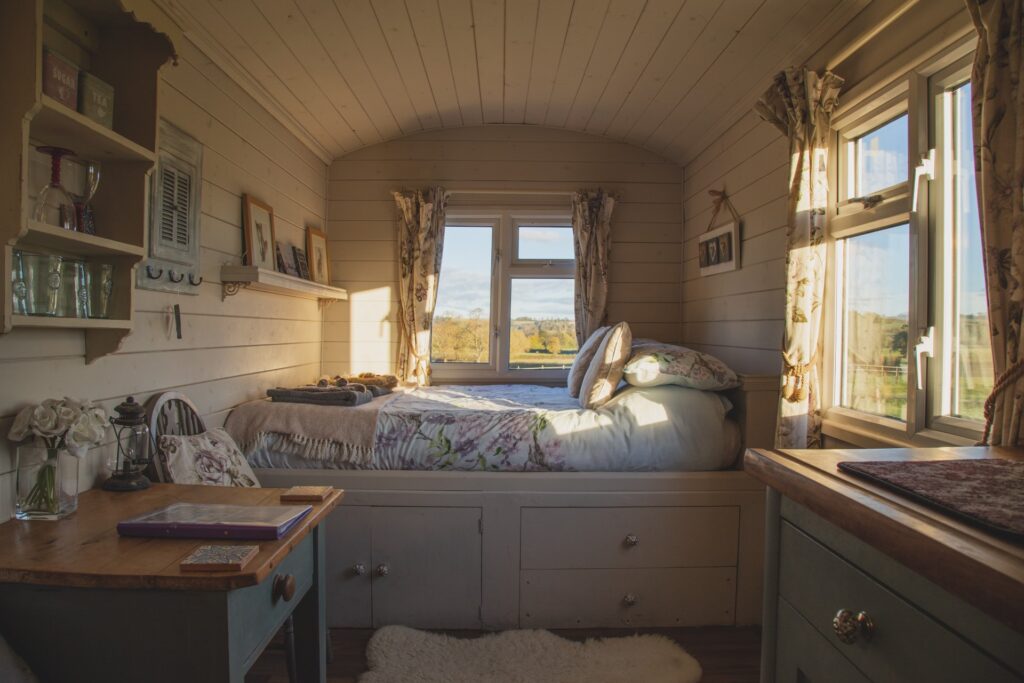
We are reader-supported. When you buy through links on our site, we may earn an affiliate commission.
Updated July, 2023
The idea of living in a self-sufficient home that requires no external energy sounds like a total dream. The elimination of energy bills sounds almost too good to be true.
Net-zero homes provide comfortable modern housing while eliminating reliance on non-renewable energy sources. They are the way of the future, and the costs involved can vary widely. The cost of any home can depend on several factors, which amplify when net zero energy comes into play. However, a net zero energy house involves more than the upfront cost, but the long-term benefits and savings.
The question still remains, how much does a net zero house cost?
What Is Net Zero Energy?
Before diving into the cost breakdown of net-zero energy, it’s important to understand what it entails. Essentially, net-zero energy homes can generate enough power to be fully self-sufficient. This means that they do not rely on outside sources of nonrenewable electricity to function. Having an eco-friendly home doesn’t necessarily mean it’s net zero. You can improve overall energy efficiency while still drawing power from the grid. A net-zero home is off-grid, even if it sits amid a typical suburban landscape.
However, eco-friendly features in net zero homes often aid their functioning. And while certain benefits may come at the end of the building process, considering these features guides the entire building process.
All the Moving Parts
One of the most important and cost-effective pieces of the puzzle when building or investing in net-zero energy in a home is insulation. This is often referred to as “sealing the envelope.” The best option is to discuss the situation with a professional. The process is all about being thorough and having an established goal of air tightness, usually below 2.0 ACH50.
Corners, doors, windows and even floors are often a part of the insulation makeup. Many net-zero homes are also double-insulated. However, insulation requirements for net-zero energy can sometimes change depending on climate. For example, wet, wintry weather may struggle with water damage and mildew, whereas homes in more arid, hot areas may endure cracks and crumbling from lack of moisture. Choosing appropriate materials for the zone is crucial.
Perhaps the most obvious cost involved in net-zero housing is the energy production itself. No matter how eco-friendly a home may be, the only way to go completely net zero is for a house to generate its own power. As few homes come with sufficient wind or water power, solar panels are the way to go for net-zero homes.
Solar panels are an investment, and there’s no way around it. They cost a significant amount of money upfront, but they pay themselves off in energy savings. The cost of solar panels for an average-sized U.S. home range between $9,828 to $15,876, though factors like the state, home size and other things can impact this price.
Energy-efficient appliances are another cost associated with net-zero homes, and this one can vary significantly. For families who need new appliances anyway, the small financial difference can usually pay itself off and be considered alongside other factors when buying appliances. However, when making a full switch, investing in new appliances can add another major cost.
The Savings
Other than the environmental aspects, why do so many people love the idea of net-zero energy? Even though it is an investment upfront, going with a net-zero home provides long-term savings and pays for itself in the long run. Since most net-zero homes rely entirely on solar energy, and electricity rates and building codes vary by location, the amount of time it takes for a net-zero home to fully pay for itself can vary.
While it takes an average of 7.8 years for a net zero residence to pay for itself in San Francisco, it can take 12.7 in Kansas City. Regardless, saving the bulk of an electric bill every month and having the upfront costs covered in a few years’ time makes net zero an appealing option.
Tiny or Full-Sized?
Another consideration for determining how much a net zero house costs is size, which can often reduce the price of any home. Much like standard real estate, expenses tend to increase by square footage — and with net-zero houses, the construction cost per square foot is higher than in standard homes. Therefore, going tiny can reduce the total you pay.
Since tiny homes take a lot less power to run, many people live in completely off-the-grid tiny houses, which usually run much cheaper than standard real estate. The hurdle is the initial investment.
Where the Money Is
When tackling the question of how much a net-zero house costs, it’s essential to remember that net-zero housing is an investment that varies, just like any home purchase. It depends on the budget and priorities. With everything accounted for, constructing net-zero energy homes cost on average $9.80 more per square foot than typical residences.
However, it only takes a few years to make up the difference in utility bill savings. Buying one of these sustainable homes largely depends on having the money available for an upfront investment. If that’s the case, making that investment is usually worth it.
The Cost of Going Net Zero
Net-zero homes are an investment like any other residence. While going net zero can sometimes be a slightly bigger investment than a regular home, it can pay itself off in a few years. With benefits to the Earth as well as the savings it can bring to those who choose it, net-zero energy sounds like a pretty sweet deal.










